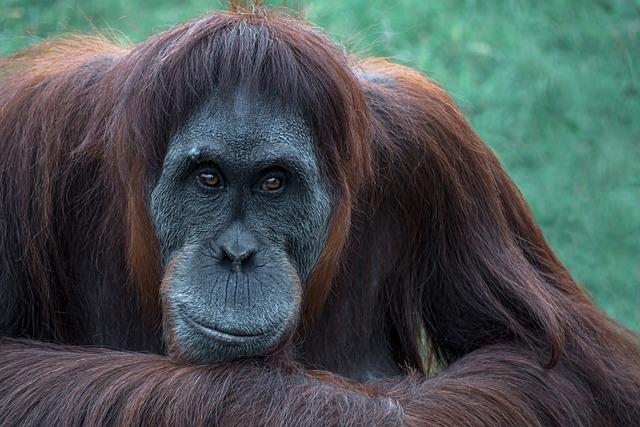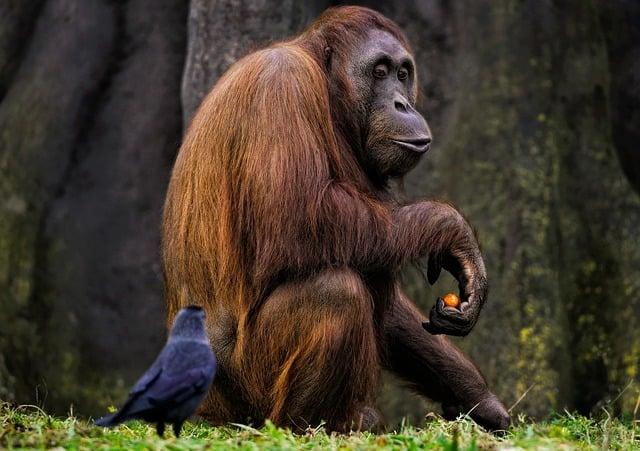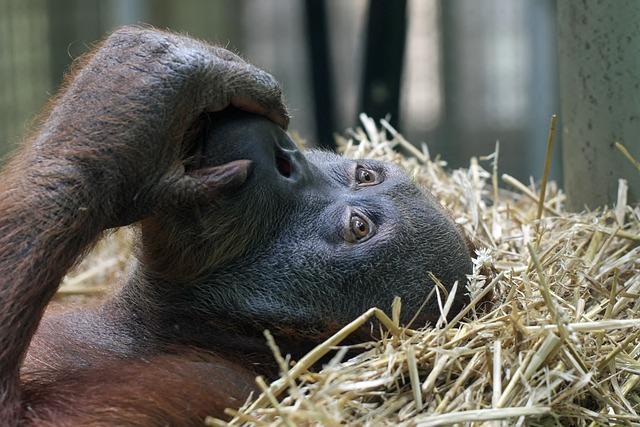- Introduction
- Habitat and Distribution
- Physical Characteristics
- Behavior and Social Life
- Conservation Status and Threats
- Conclusion
- FAQs
- References
Introduction
The Tapanuli Orangutan is a critically endangered species of great apes that was only recently identified as distinct in 2017. With fewer than 800 individuals left, it is currently one of the most threatened species worldwide. In this article, we will explore their habitat and distribution in Sumatra, their unique physical characteristics, fascinating behaviors, and social structures. We'll also take a closer look at the environmental and human-made threats they face and efforts towards their conservation.
Read on to discover why the Tapanuli Orangutan deserves urgent attention and protection and what makes them so special compared to other species of orangutans. We will also answer common questions about this incredible primate's lifestyle, reproduction, and the ongoing conservation efforts aimed at saving them from extinction.
Habitat and Distribution
The Tapanuli Orangutan (Pongo tapanuliensis) is native to the island of Sumatra in Indonesia. Specifically, they inhabit the Batang Toru Ecosystem located in Tapanuli, North Sumatra. This ecosystem is divided into three forest blocks, and it's within these tropical forests—the last stronghold for the Tapanuli Orangutan—that around 800 individuals are found.
Unlike the Sumatran and Bornean orangutans, the Tapanuli Orangutan is restricted to a much smaller geographical range. These dense high-altitude forests provide the ideal environment for the Tapanuli Orangutans, offering them ample food sources and tree cover. However, deforestation and habitat fragmentation are making survival increasingly difficult for this species.

(Image: Pixabay/@christels)
Due to their limited location in the Batang Toru region, this small population is highly vulnerable to habitat destruction caused by development projects, agriculture, and illegal wildlife trade. The continued encroachment into their territory can quickly lead to further population declines.
Physical Characteristics
Tapanuli Orangutans have several distinctive features that set them apart from their close relatives, the Sumatran and Bornean orangutans. Firstly, they are known for their frizzier and lighter-colored fur. Males tend to develop large cheek pads called "flanges," though these are slimmer in comparison to other orangutan species. Their faces have a more oblong shape with a distinct mustache that gives them a uniquely expressive appearance.
Another striking difference from other orangutan species is their smaller skull size and slightly different bone structure. Studies based on DNA analysis have also confirmed that the Tapanuli Orangutans have been evolving separately from their orangutan cousins for over 3 million years, which emphasizes their distinct lineage. Despite these unique traits, they remain highly agile in the trees, thanks to their long arms, which allows them to traverse treetops with ease.

(Image: Pixabay/@herbert2512)
Additionally, Tapanuli Orangutans tend to be smaller in size compared to both the Sumatran and Bornean orangutans. This size difference may be an adaptation to their specific environment or the lower nutritional resources available in their restricted habitat.
Behavior and Social Life
Much like other orangutans, Tapanuli Orangutans are arboreal, meaning they spend most of their lives in trees. They build nests high up in the forest canopy where they sleep at night. These nests are constructed by weaving together branches and foliage, offering them a safe space from ground predators. During the day, these remarkable primates are known for foraging for fruits, insects, and leaves, but they sometimes consume bark or the inner cambium of trees depending on food availability.

(Image: Pixabay/@ambquinn)
Tapanuli Orangutans exhibit semi-solitary behavior. Adult males tend to roam alone, while mother orangutans stay with their offspring for extended periods, teaching them survival skills like foraging, tool use, and nest-building. Male orangutans often communicate using loud calls emitted from their throats, recognizable across long distances. These vocalizations help maintain territories and warn other males to keep away.
In terms of their social structure, these orangutans exhibit fairly minimal interaction among adults except during mating periods. Female orangutans are responsible for most of the parental care, as the males play little role in raising their young.
Conservation Status and Threats
As of now, the Tapanuli Orangutan is listed as “Critically Endangered” by the International Union for Conservation of Nature (IUCN). With a population estimate of fewer than 800 individuals, their risk of extinction is extremely high. Several factors contribute to their rapidly decreasing numbers, with deforestation being the leading cause. The expansion of agricultural plantations—particularly palm oil—and infrastructure developments, such as hydropower dams, significantly reduce their habitat.
Illegal hunting and wildlife trading also exacerbate the threats faced by the Tapanuli Orangutans. Young orangutans especially are targeted for private collectors, leaving adults vulnerable to poaching. The fragmentation of forests further isolates populations, resulting in inbreeding, which lowers genetic diversity and reduces the overall health and reproductive capacity of the species.

(Image: Pixabay/@Andhoj)
Numerous conservation organizations and local activists are working tirelessly to prevent the total extinction of the Tapanuli Orangutan. Protecting the Batang Toru Ecosystem, facilitating reforestation, and combating illegal trading are some of the actions being taken. Scientists, environmentalists, and governments are pushing for heightened legal protections to safeguard the last remaining habitats of these magnificent primates.
Conclusion
The Tapanuli Orangutan represents an astonishing discovery in recent times but is also a somber reminder of the fragile state of our biodiversity. The critical situation facing this species requires immediate attention and collaborative efforts globally to ensure its survival. By addressing both habitat destruction and poaching, there is hope that future generations may witness the flourishing of the Tapanuli Orangutan again in their natural habitat. This rare and unique species deserves all of our efforts to save it from untimely extinction.
FAQs
How many Tapanuli Orangutans are left?
There are currently fewer than 800 Tapanuli Orangutans remaining in the wild, making them critically endangered.
Where do Tapanuli Orangutans live?
They are only found in the Batang Toru Ecosystem in Northern Sumatra, Indonesia.
What makes the Tapanuli Orangutan different from other orangutans?
They have unique genetic traits, physical characteristics like frizzier hair, smaller size, and slimmer cheek pads, distinguishing them from the Sumatran and Bornean orangutans.
What are the main threats faced by Tapanuli Orangutans?
The major threats are habitat loss due to deforestation, agricultural expansion, illegal wildlife trade, and inbreeding due to isolated populations.
How can we help protect Tapanuli Orangutans?
Supporting conservation organizations, demanding sustainable agricultural practices, and raising awareness about their endangered status are some ways to help protect them.

